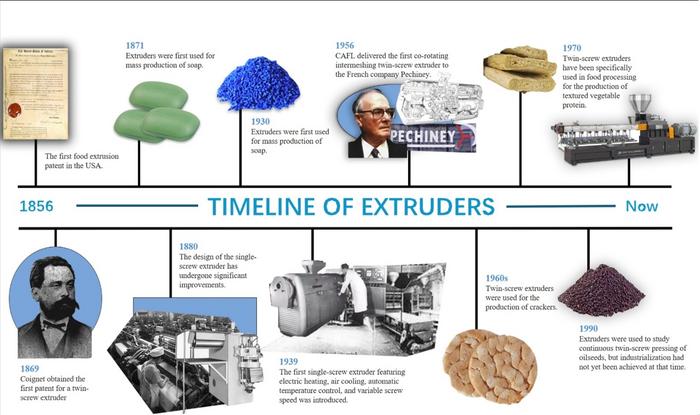
Extrusion technology has emerged as a pivotal process in food manufacturing, particularly in the transformation of cereal crops like wheat into various ready-to-eat products. As a cereal grain, wheat is celebrated for its remarkable sensory attributes and processing capabilities, making it an essential ingredient in an array of products ranging from bread to pasta. Recent advancements in extrusion technology are helping to enhance these aspects significantly while delivering additional benefits such as improved nutritional value and functionality.
In a highly insightful review published in the KeAi journal Food Physics, researchers from China delved deep into the nuances of extrusion processing. Their study meticulously explores how the parameters of the extrusion process impact the structural, functional, and physicochemical properties of wheat-based products. Such insights are vital for optimizing production methods, ensuring that manufacturers can meet consumer demands for both quality and health benefits in food products.
One of the standout revelations from this research is the ability of extrusion to modify wheat products’ sensory properties favorably, while also reducing allergenic compounds. As consumers become more health-conscious, the demand for food products that offer not only taste but also enhanced safety profiles has risen dramatically. Professor Chao Ding, an influential figure in the study, emphasizes this by stating that fine-tuning the extrusion parameters can lead to notable improvements in food safety, therefore opening new avenues for healthier food options.
The manufacturers’ freedom to adjust specific parameters during the extrusion process facilitates beneficial structural variations in wheat products. These include improved starch gelatinization and protein denaturation, which are critical for enhancing product functionality. This has significant implications for the texture and palatability of food products, aligning perfectly with modern consumers’ preferences for quality and enjoyment in their diets.
Moreover, the researchers highlighted how extrusion technology aligns with contemporary trends leaning toward healthy, sustainable eating habits. This is increasingly important in a world that is grappling with environmental concerns, as extruded wheat products are not only nutritionally superior but also promise lower energy consumption and reduced environmental footprints in their production processes. These findings resonate well with evolving consumer preferences, reinforcing the importance of sustainability in food agriculture.
Despite the clear benefits, the review does not shy away from addressing the challenges faced in the extrusion process. Notably, it mentions the potential for elevated production costs and the complexities tied to technological advancements in food processing. However, the researchers believe that the trade-off between product quality, nutritional enhancement, and production efficiency is worth pursuing. This offers an optimistic outlook on the future of food processing technologies, as there appears to be a consensus that with the right adjustments, manufacturers can optimize to attain both profitability and quality.
It’s essential to recognize the broader context within which these developments in extrusion technology occur. As public awareness regarding nutrition and healthy eating patterns grows, there is a pressing need for food production methods that cater to these sentiments without compromising on taste or quality. Research like that conducted by Ding and his colleagues is essential in providing evidence-based practices that can be employed across the industry, ensuring that food manufacturers can adapt to changing consumer expectations seamlessly.
Furthermore, the potential applications of extruded wheat products extend beyond conventional starchy foods. Various innovative items can be created that fit into diverse dietary needs, paving the way for gastronomy that is both inventive and health-oriented. This versatility is critical as it enables product developers to cater to a wider audience, including those with specific dietary restrictions or preferences looking for nutritious options.
The inclusion of extrusion technology in the realm of food science isn’t merely a passing trend; it represents a significant shift toward a more health-conscious manufacturing philosophy. By employing refined methods such as extrusion, producers of wheat-based products are likely to gain a competitive edge in a crowded market where consumer health is becoming increasingly paramount.
The promise of extrusion technology doesn’t end with stroke products. The design of novel formulations that prioritize health and functional benefits while meeting sensory expectations is a complex but achievable goal. The scientific community’s ongoing contributions to understanding the intricacies of the extrusion process will enable consistent advancement in food product development, catering to evolving lifestyles.
In conclusion, the significant potential of extrusion technology in reshaping the landscape of wheat-based products is evidenced by various success stories from recent research. It showcases how the strategic implementation of food processing methods can not only fulfill but exceed consumer expectations in health, sustainability, and enjoyment. As further research continues to unveil the multifaceted advantages of extrusion, the future of healthy eating looks increasingly promising.
Subject of Research: Effects of extrusion processing on the structural, functional, and physicochemical properties of wheat and wheat-based products.
Article Title: Effect of extrusion processing on the structural, functional, and physicochemical properties of wheat and wheat-based products: A review.
News Publication Date: [Insert Date]
Web References: [Insert References]
References: [Insert References]
Image Credits: Junjie Chen, Qiang Liu, et al.
Keywords: Extrusion technology, wheat products, food processing, nutritional enhancement, sensory properties, sustainable food production, allergenic reduction, food science.
Tags: advancements in food manufacturingconsumer demand for healthy foodsfunctional properties of cereal grainshealth benefits of extruded wheat productsimpact of extrusion on food qualitynutrient retention in food processingoptimizing extrusion processing parametersphysicochemical properties of wheat-based productsready-to-eat wheat productsreducing allergenic compounds in foodsensory attributes of wheat productswheat extrusion technology





